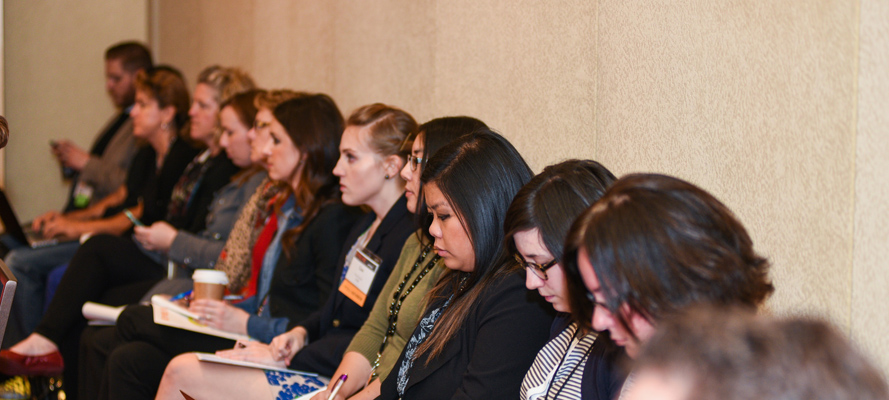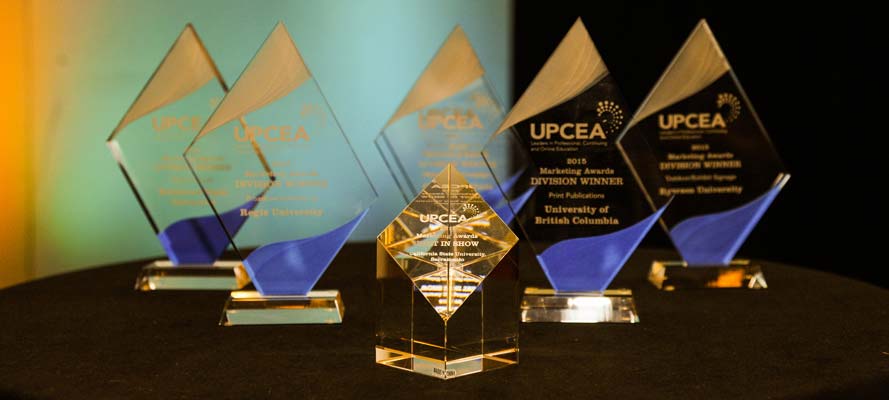Convergence in Action: Building Strategic Credential Frameworks Through Collaboration

By Amy Claire Heitzman, Ph.D.,
Deputy CEO and Chief Learning Officer, UPCEA
At Convergence 2025, a conversation unfolded that perfectly captured the spirit of the event—collaboration across boundaries, disciplines, and traditions to create something more unified and learner-centered.
In Convergence in Action: Strategic Credential Framework Collaborations Across Campus, I had the pleasure of moderating a panel featuring Elizabeth Kerr and Molly McDermott-Fallon of the University of Cincinnati and Beth Merenstein and Patrick Tucker of Central Connecticut State University. Together, they revealed what it looks like to build shared institutional frameworks for credentialing—structures that not only streamline systems but also expand the definition of student success.
From Fragmentation to Framework
“Our project has been—what I often call—the Wild West of records,” said Molly McDermott-Fallon, Assistant Vice Provost and University Registrar at Cincinnati. “We’ve had non-credit, alternative credentialing, and experiential records living in pockets across the institution. Our goal is to create governance and policies that ensure what we record reflects meaningful, verifiable learning.”
Her colleague Elizabeth Kerr, Assistant Dean for Professional and Continuing Education, echoed that sentiment. “We’re expanding non-credit learning while also building the foundation—systems, shared language, governance—that makes it sustainable,” she explained. “It’s about culture as much as it’s about process.”
At Central Connecticut State University, Beth Merenstein and Patrick Tucker shared their own ambitious project: the Central Success Journey (CSJ), a Comprehensive Learner Record (CLR) designed to sit alongside the traditional transcript. “Our ‘why’ is always about student success,” said Merenstein. “A CLR allows students to articulate the full story of their learning.”
Tucker added, “We’re making the CSJ available to every undergraduate student. It’s about integrating curricular and co-curricular experiences—and doing it in a way that’s scalable, accurate, and authentic.”
Collaboration as the Core Competency
Each speaker underscored that convergence doesn’t happen through technology alone. It requires trust, dialogue, and shared ownership.
“You don’t have to boil the ocean all at once,” said Tucker. “Progress, not perfection, is the goal.”
At Central, that progress began with research, faculty engagement, and senior leadership buy-in. “Last year, we listened to others talk about CLRs and wondered, how would we even start?” Merenstein recalled. “One step at a time, we built the right coalitions.”
For Cincinnati, transparency has been a guiding force. “We’ve made sure this work doesn’t happen in a black box,” McDermott-Fallon noted. “People need to see how their input matters. Transparency builds trust—and trust builds coalitions.”
Kerr highlighted the importance of curiosity and listening: “Because this work touches every corner of the university, I’ve spent as much time asking questions as building systems. We have to understand our partners’ needs before designing solutions.”
Early Wins That Build Momentum
Though each team described their work as “in progress,” the tangible achievements are already shaping institutional change.
At Central Connecticut, faculty aligned general education with NACE competencies, while collaboration with IT and advisors created momentum across campus. “When we present to internal and external groups, the enthusiasm is immediate,” said Merenstein.
At Cincinnati, key milestones included the establishment of a formal governance structure, cross-college partnerships, and even a shared staff position funded jointly by the Registrar’s Office and the College of Continuing Education. “Those decisions made collaboration visible,” McDermott-Fallon explained. Kerr added, “Each artifact—whether a website, a guide, or a shared form—helps make the work real.”
Lessons in Patience and Perspective
When reflecting on lessons learned, the panelists were candid about the challenges of pace, scope, and alignment.
“Slow down,” advised McDermott-Fallon. “We were moving fast, and that built momentum—but sometimes patience gets you further. Every institution’s pace is different.”
Kerr agreed. “We backed into this project, and it grew quickly. If I could start again, I’d begin smaller and expand strategically. And aligning non-credit and credit processes has been key to bridging cultures.”
Tucker emphasized the evolving role of registrars in this work: “At first, I thought this might fall outside my lane. But registrars bring the perspective of integrity and scalability—it’s essential for the success of a CLR.”
And Merenstein concluded with a reminder to pause and celebrate: “Be patient with yourselves. Take time to see how far you’ve come. Last year at Convergence, Patrick and I were the ones asking, ‘How do we even begin?’ and now we’re here, sharing our progress.”
Progress, Not Perfection
In the end, this session was more than a showcase of projects—it was a portrait of convergence in action. Across institutions, teams are working to unify systems, language, and culture in ways that honor both institutional mission and learner mobility.
Credential convergence is not about standardization—it’s about alignment, empathy, and intentional design. The lessons from these institutions remind us that innovation doesn’t come from technology alone, but from the people willing to collaborate across boundaries and build structures that tell the whole story of learning.
At Convergence 2025, that story was alive—and it’s only just beginning.
Amy Heitzman, Ph.D., is UPCEA’s Deputy CEO and Chief Learning Officer.
Content for this resource was refined with the assistance of ChatGPT, an AI language model. All text has been thoroughly reviewed, edited, and approved by UPCEA staff with subject matter expertise. References and links have been verified for accuracy and reliability.
Other UPCEA Updates + Blogs
UPCEA Releases 2026 Predictions for Higher Education
Report highlights the accelerating transformation of higher education, from AI-driven infrastructure to lifelong learning pathways. WASHINGTON (Dec. 8, 2025) –…
Read MoreUPCEA Announces Release of New Secret Shopper Benchmarking Study at UPCEA MEMS 2025
Findings unveiled during the conference’s closing keynote reveal major gaps and opportunities in enrollment responsiveness. WASHINGTON and BOSTON (Dec. 4,…
Read More

